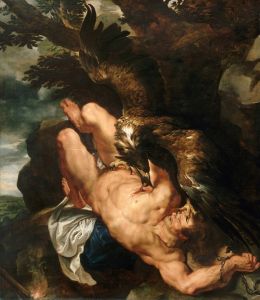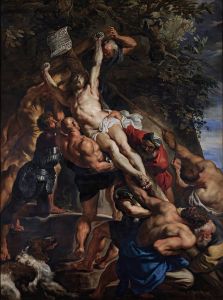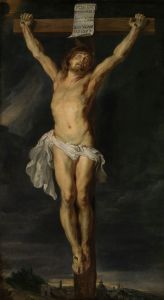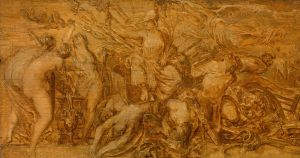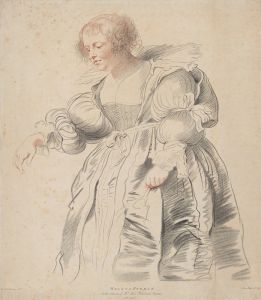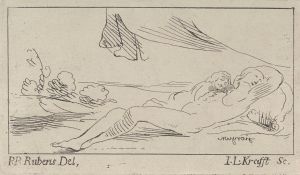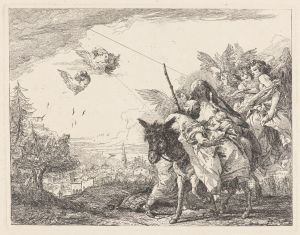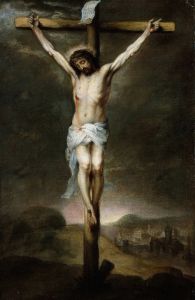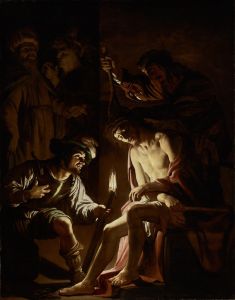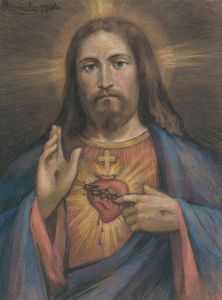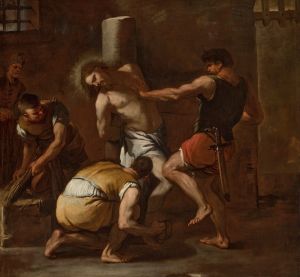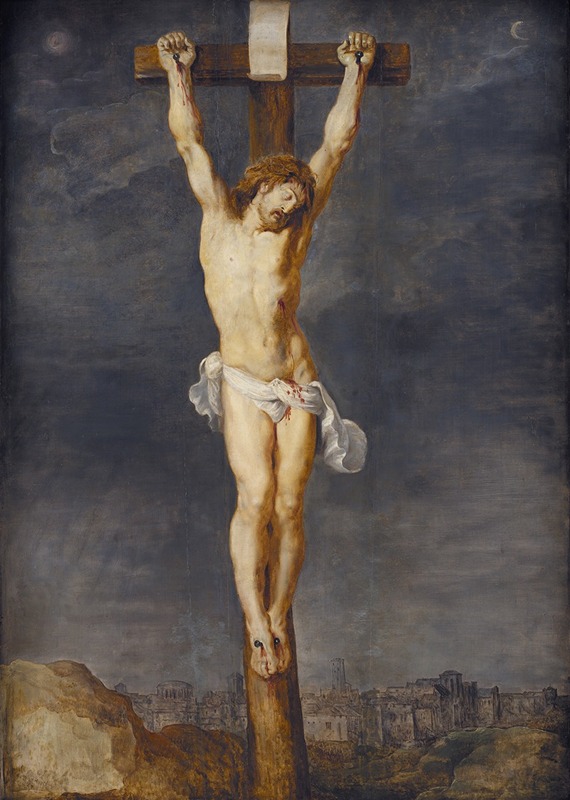
Christ on the Cross
A hand-painted replica of Peter Paul Rubens’s masterpiece Christ on the Cross, meticulously crafted by professional artists to capture the true essence of the original. Each piece is created with museum-quality canvas and rare mineral pigments, carefully painted by experienced artists with delicate brushstrokes and rich, layered colors to perfectly recreate the texture of the original artwork. Unlike machine-printed reproductions, this hand-painted version brings the painting to life, infused with the artist’s emotions and skill in every stroke. Whether for personal collection or home decoration, it instantly elevates the artistic atmosphere of any space.
"Christ on the Cross" is a painting by the renowned Flemish Baroque artist Peter Paul Rubens, who is celebrated for his dynamic compositions, vibrant color palette, and masterful depiction of human figures. This particular work exemplifies Rubens' ability to convey intense emotion and drama through his art.
Created in the early 17th century, "Christ on the Cross" is a powerful representation of the crucifixion of Jesus Christ, a central theme in Christian art. Rubens' interpretation of this biblical event is notable for its dramatic use of light and shadow, which heightens the emotional impact of the scene. The painting captures the moment of Christ's crucifixion with a focus on his suffering and sacrifice, a common subject in Rubens' religious works.
Rubens was deeply influenced by the Italian Renaissance and Baroque masters, such as Michelangelo and Caravaggio, which is evident in his use of chiaroscuro—a technique that emphasizes the contrast between light and dark to create a sense of volume and three-dimensionality. In "Christ on the Cross," this technique is employed to draw attention to the figure of Christ, whose body is illuminated against a darker background, emphasizing his central role in the composition.
The painting is characterized by its dynamic composition and the emotional intensity of the figures. Christ is depicted with a sense of realism and anatomical precision, showcasing Rubens' deep understanding of the human form. The expression on Christ's face conveys a mixture of agony and serenity, capturing the dual nature of his sacrifice. The background and surrounding figures, often including mourners or angels, are rendered with a similar attention to detail, contributing to the overall dramatic effect.
Rubens' "Christ on the Cross" reflects the Counter-Reformation ideals of the time, which sought to reaffirm the power and glory of the Catholic Church through art. By focusing on the suffering and redemption of Christ, the painting serves as a visual representation of the Church's teachings and an emotional appeal to the viewer's faith.
The painting is part of Rubens' larger body of work that includes numerous religious commissions, which were highly sought after by churches and patrons across Europe. His ability to convey complex theological themes through compelling visual narratives made him one of the most influential artists of his time.
"Christ on the Cross" is housed in various collections, with different versions and interpretations by Rubens existing in museums and galleries worldwide. Each version reflects Rubens' evolving style and his ongoing exploration of religious themes. The painting continues to be studied and admired for its artistic mastery and its profound impact on the development of Baroque art.
In summary, Peter Paul Rubens' "Christ on the Cross" is a quintessential example of Baroque religious art, showcasing the artist's skill in composition, use of light, and emotional expression. It remains a significant work for its artistic and historical value, reflecting the religious and cultural context of its time.





